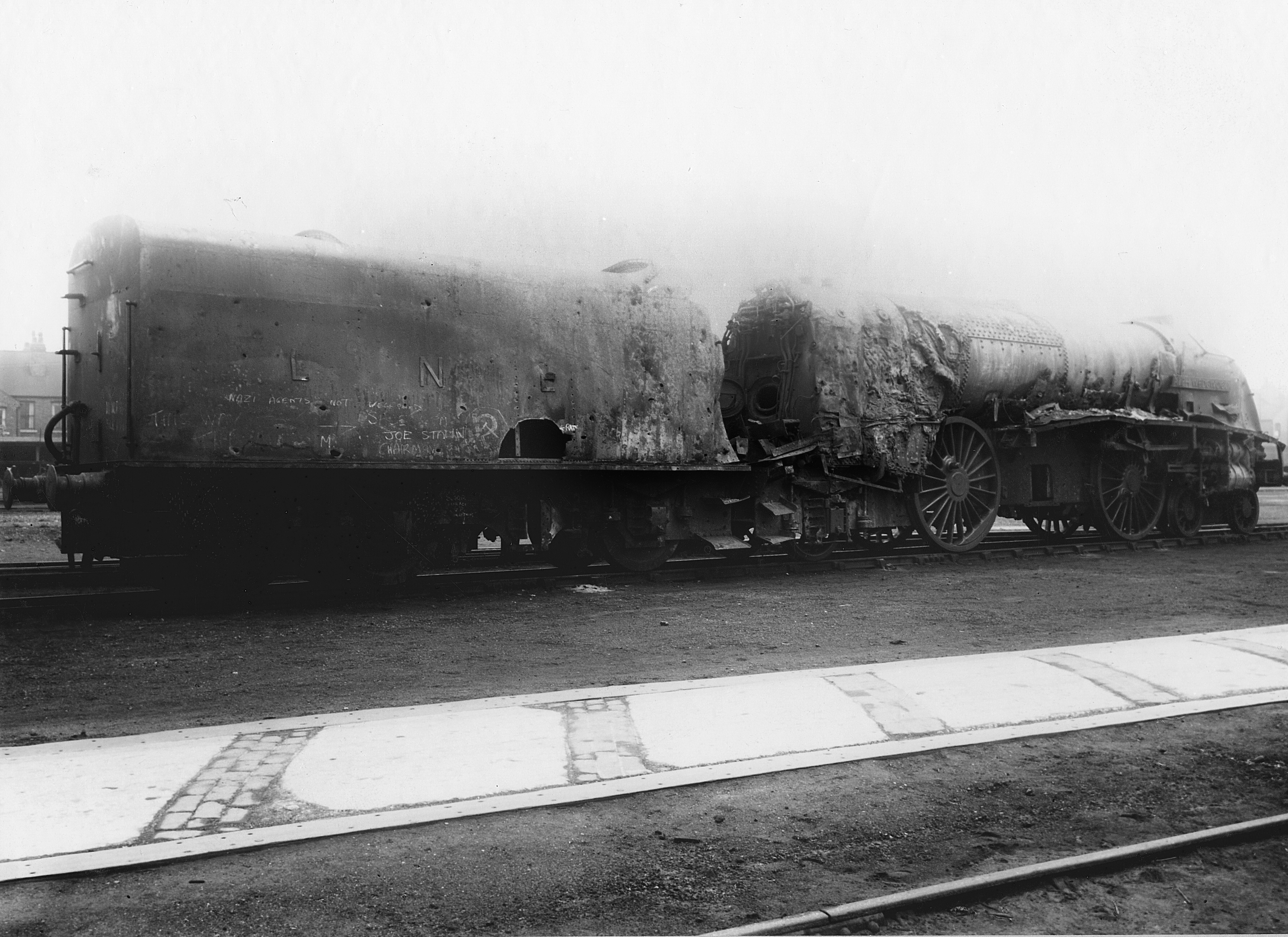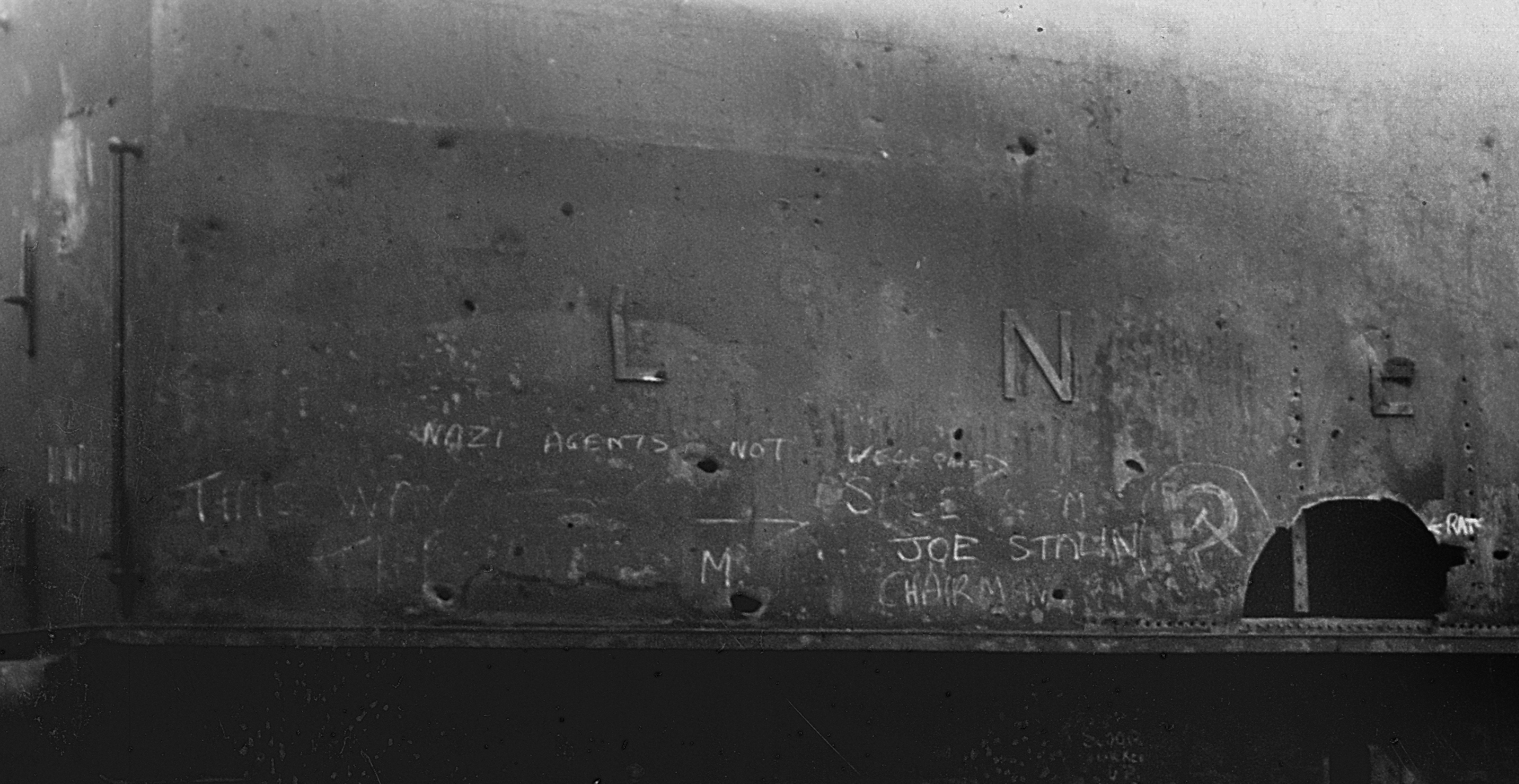In the early hours of April 29th 1942, York suffered its heaviest air raid of the War – 94 people were killed or fatally wounded. The railway facilities, being a crucial strategic transport hub, were heavily bombed. Amongst other damage, two LNER locomotives were damaged beyond repair and subsequently scrapped, one of them being streamlined A4 No 4469, “Sir Ralph Wedgwood”.
Recently, a photo album in the NRM Archive revealed images of the after-effects. Little information was provided, other than that this picture was taken at Doncaster, presumably a few days after the bombing:-
Missing its cab, streamlined cladding and middle driving wheels, and riddled with holes from shrapnel, 4469 was a sorry sight. What was most intriguing was the graffiti on the tender, particularly as it was virtually illegible. The information card with the picture said that the original negative was lost, so the print itself was scanned, cropped and digitally manipulated, resulting in this:-
What was written on the rear of the tender was still obscured but what was on the side was clearer. Several comments could now be deciphered. Officialdom had chalked “scoop locked up” below running plate level, presumably to ensure that the tender wasn’t moved prematurely, risking an accident from a freely-swinging water pick-up scoop snagging on the sleepers below.
Officialdom hadn’t been the only ones busy with the chalk, though. It was frustrating to only be able to read “this way to the…(illegible)”, though the large bite-shaped shrapnel hole on the tender side was indicated with an arrow and “Rats”. However, most obvious was the slogan “Nazi agents not welcomed, (signed) Joe Stalin, Chairman”, together with a large hammer and sickle slogan – the work of a militant railwayman perhaps?
War-time graffiti was commonplace (“Kilroy was here”) but quite why the LNER didn’t wipe it off before taking its official photographs is unknown. How long it was allowed to remain is equally unclear but the tender itself was one of only two parts of the locomotive deemed salvageable. One was the chime whistle, which was attached to diminutive Y8 class shunting loco No 8091, a member of the smallest class of engine used by the LNER. The tender itself was kept in store until 1945 (perhaps complete with its scribblings) and then repaired and attached to A2/1 Pacific No 3696 “Highland Chieftain”, surviving until 1960.


Very interesting. When I was a kid in the early 1950s, my brother was given a book on LNER trains, and the picture of the destroyed Sir Ralph Wedgwood haunted me for years. I understand that another locomotive was later given the same name.
Indeed. The name Sir Ralph Wedgwood was given to No. 4466 Herring Gull, which carried the name until it was withdrawn in 1965.
I’m surprise there’s no mention here that a new A4-Class locomotive was built to replace the damaged Sir Ralph Wedgwood, hence why there were actually 35 A4’s.
I always assumed that BR number 60006 Sir Ralph Wedgwood was the replacement loco.